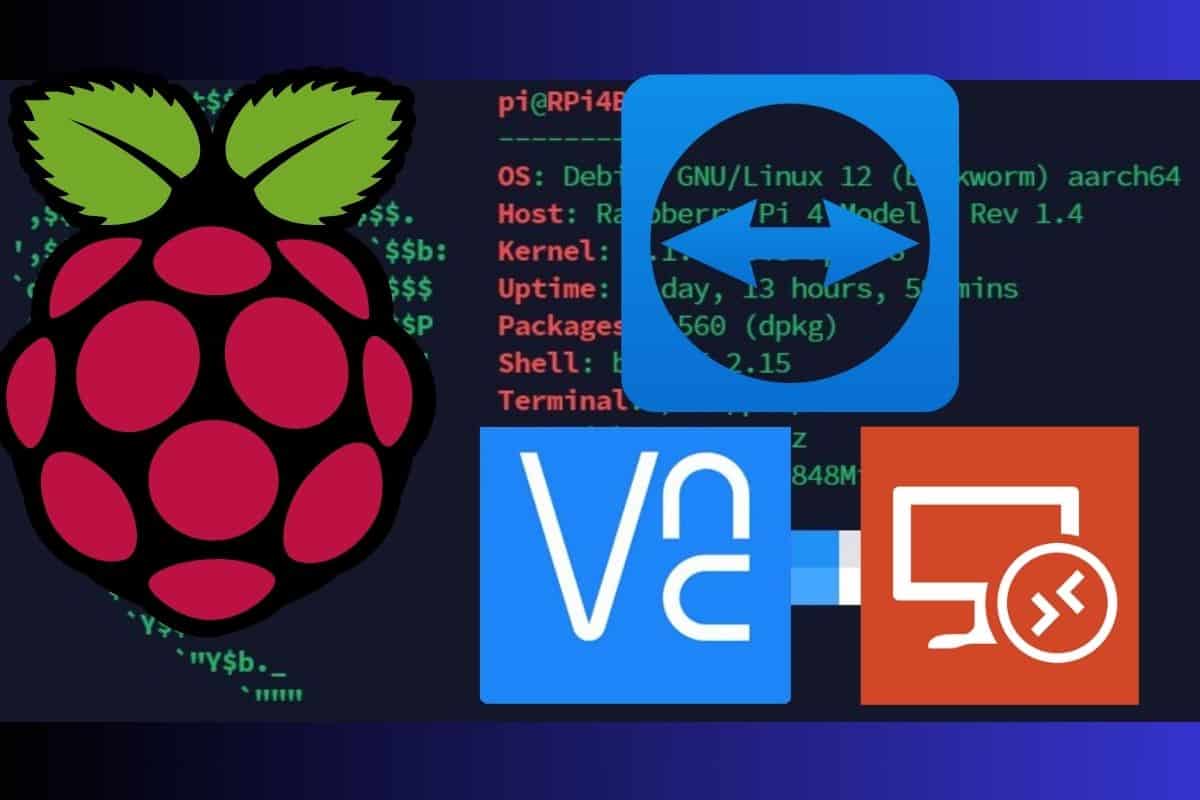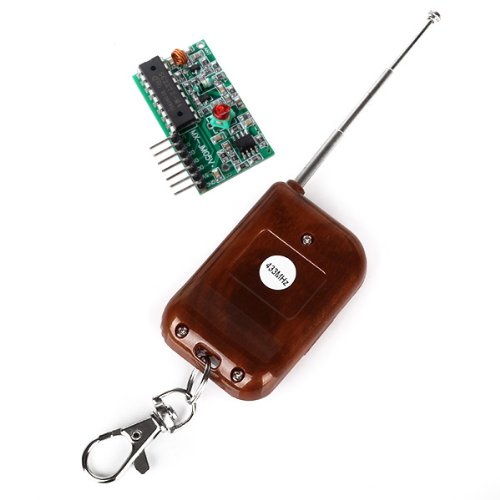Remote Raspberry Pi Access: Setup & Security Guide
In an increasingly interconnected world, can you truly afford to limit the potential of your Raspberry Pi? The answer, for many tech enthusiasts, developers, and even casual hobbyists, is a resounding no.
The allure of remote access to a Raspberry Pi is undeniable. Imagine the convenience of overseeing your home automation system from thousands of miles away, or the peace of mind knowing you can access critical files stored on your device, regardless of your location. This capability extends far beyond mere convenience; it's about unlocking a new level of productivity and control. However, with such powerful abilities comes a responsibility the absolute necessity of robust security protocols. This guide delves into the practical steps and advanced configurations needed to not only remotely control your Raspberry Pi but to do so safely and efficiently. By mastering these techniques, you transform a simple single-board computer into a versatile tool, capable of adapting to your every need.
This comprehensive exploration will guide you through every facet of setting up remote access for your Raspberry Pi. From the fundamental initial steps to advanced security implementations and troubleshooting tips, you'll gain the knowledge and the practical skills needed to confidently manage your device remotely. Prepare to harness the full potential of your Raspberry Pi a device that is ready to be transformed to the world
- Jane Omeara Driscoll Behind Bernie Sanders A Look At His Spouse
- Decoding Sexy Videos Trends Tips More 2024 Guide
Let's discover how to make your Raspberry Pi accessible from anywhere in the world
Table of Contents
- Introduction to Remote Control Raspberry Pi Over Internet
- Why Remote Control Raspberry Pi Over Internet?
- Basic Setup for Remote Control Raspberry Pi
- SSH Access for Raspberry Pi
- VNC Access for Raspberry Pi
- Security Measures for Remote Control
- Dynamic DNS for Raspberry Pi
- Port Forwarding for Raspberry Pi
- Troubleshooting Common Issues
- Advanced Configurations for Remote Access
Introduction to Remote Control Raspberry Pi Over Internet
The Raspberry Pi stands as a testament to innovation in the realm of computing. It's not just a computer; it's a catalyst for creativity and a doorway to exploring the intricate world of technology. Its affordability combined with its remarkable versatility, has cemented its place in homes, educational institutions, and professional settings, for a wide spectrum of applications, ranging from home automation hubs to complex data centers. The ability to remotely control a Raspberry Pi over the internet is, arguably, one of its most groundbreaking features.
This capability allows you to interact with your device regardless of your physical location. This opens up an array of possibilities: controlling Internet of Things (IoT) devices, hosting servers, accessing files, and so much more. Remote access is facilitated by secure communication protocols and cloud services, and it's crucial to ensure that your Raspberry Pi remains accessible and protected from unauthorized access.
- Jolene Blalock The Tpol Star Trek Icon You Need To Know
- Mefan Fox Erome Unveiling The Digital Star Trends
The core of remote control, and the benefits it offers will be explored in this section. Whether your objective is a personal project or managing a professional server, an in-depth understanding of remote access is essential.
Why Remote Control Raspberry Pi Over Internet?
The advantages of controlling your Raspberry Pi over the internet are significant and far-reaching. Let's examine some key reasons why this functionality is indispensable:
- Convenience: Access your Raspberry Pi from any location on the globe, provided you have a device with an active internet connection. This empowers you to monitor, manage, and interact with your device from anywhere.
- Flexibility: Managing multiple Raspberry Pi devices simultaneously is greatly simplified, offering streamlined project management and effortless scalability.
- Security: Comprehensive security measures protect your device, mitigating unauthorized access and ensuring the integrity of your data.
- Cost-Effective: Cloud-based solutions for remote access can provide substantial savings on hardware expenses.
- Automation: Remote control allows for the seamless automation of tasks and processes, optimizing efficiency and performance.
For those involved in IoT or embedded systems, mastering the art of remote control over the internet is now indispensable. The ability to manage devices remotely will become even more critical as technology continues to evolve.
Basic Setup for Remote Control Raspberry Pi
Understanding the Requirements
Before you embark on the journey of remote control, it's essential to ensure that your Raspberry Pi is correctly configured. The fundamental requirements include:
- A Raspberry Pi with a functional operating system (such as Raspbian or Ubuntu).
- A stable internet connection.
- A router with port forwarding capabilities.
- A dynamic DNS service (optional, but strongly recommended).
Once you have these elements in place, you can progress with the setup. Begin by updating your Raspberry Pi's software and installing the necessary packages.
Configuring Your Raspberry Pi
To configure your Raspberry Pi for remote access, follow these straightforward steps:
- Install the latest version of Raspbian or your chosen operating system.
- Update your system using the command:
sudo apt update && sudo apt upgrade. - Install SSH and VNC server packages with the command:
sudo apt install ssh vnc4server. - Set a static IP address for your Raspberry Pi to ensure consistent connectivity.
These initial steps will build a solid foundation for a secure and dependable remote access setup.
SSH Access for Raspberry Pi
Secure Shell (SSH) is one of the most prevalent methods for gaining remote access to a Raspberry Pi. It provides a secure and encrypted connection, which makes it an ideal solution for managing your device over the internet.
Enabling SSH on Raspberry Pi
To enable SSH on your Raspberry Pi, here's what you need to do:
- Open the terminal on your Raspberry Pi.
- Execute the command:
sudo raspi-config. - Choose "Interfacing Options" and enable SSH.
- Restart your Raspberry Pi using the command:
sudo reboot.
After SSH is enabled, you can connect to your Raspberry Pi using an SSH client, such as PuTTY, or the built-in terminal on macOS and Linux.
Connecting via SSH
To initiate an SSH connection to your Raspberry Pi, use the following command:
ssh pi@your_raspberry_pi_ip_address
Replace your_raspberry_pi_ip_address with the actual IP address of your Raspberry Pi. You will be prompted to enter the password for the pi user.
VNC Access for Raspberry Pi
SSH is excellent for command-line access, while VNC (Virtual Network Computing) allows you to remotely access the graphical interface of your Raspberry Pi. This capability is particularly useful for applications that require a graphical user interface.
Installing VNC Server
To install a VNC Server on your Raspberry Pi, follow these steps:
- Open the terminal and run
sudo apt install realvnc-vnc-server realvnc-vnc-viewer. - Reboot your Raspberry Pi using
sudo reboot. - Use the Raspberry Pi Configuration tool and enable VNC under the "Interfaces" tab.
Once VNC is installed and enabled, connect to your Raspberry Pi using a VNC client on your computer or mobile device.
Security Measures for Remote Control
Securing your Raspberry Pi is of utmost importance when you enable remote access. Implement the best practices outlined below to ensure your device stays protected:
- Use Strong Passwords: Don't use default passwords and create complex combinations of letters, numbers, and symbols.
- Enable Two-Factor Authentication: Add an additional layer of security by requiring a second form of verification.
- Regularly Update Software: Keep your operating system and applications up to date to patch vulnerabilities.
- Use a Firewall: Configure your router’s firewall to restrict unauthorized access.
- Monitor Logs: Regularly review system logs to check for any suspicious activity.
By implementing these security measures, you can substantially reduce the risk of unauthorized access to your Raspberry Pi.
Dynamic DNS for Raspberry Pi
Dynamic DNS (DDNS) enables you to access your Raspberry Pi using a domain name instead of an IP address. This is especially useful when your internet service provider assigns a dynamic IP address to your router.
Setting Up DDNS
To configure DDNS for your Raspberry Pi, take these steps:
- Sign up for a free DDNS service, such as No-IP or DuckDNS.
- Create a hostname and configure it to point to your router’s public IP address.
- Install the DDNS client on your Raspberry Pi and configure it to automatically update the hostname.
With DDNS in place, access your Raspberry Pi using a consistent domain name, irrespective of changes to your IP address.
Port Forwarding for Raspberry Pi
Port forwarding allows you to direct incoming traffic from the internet to your Raspberry Pi. This is essential for remote access, as it ensures your device is reachable from outside your local network.
Configuring Port Forwarding
To configure port forwarding on your router, follow these steps:
- Log in to your router’s admin interface using its IP address (e.g., 192.168.0.1).
- Locate the "Port Forwarding" or "Virtual Server" section.
- Create a new rule to forward ports 22 (SSH) and 5900 (VNC) to your Raspberry Pi’s IP address.
- Save the changes and restart your router if necessary.
With port forwarding configured, your Raspberry Pi will be accessible from the internet using its public IP address or DDNS hostname.
Troubleshooting Common Issues
Despite careful configuration, issues can arise when controlling your Raspberry Pi over the internet. Here are some common problems and their solutions:
- Unable to Connect: Verify your IP address, port forwarding settings, and firewall rules.
- Connection Drops: Verify network stability and ensure your Raspberry Pi has a static IP address.
- Security Alerts: Review system logs for any suspicious activity and update your security measures accordingly.
If you encounter any problems, consult the official Raspberry Pi documentation or seek help from online communities and forums.
Advanced Configurations for Remote Access
For advanced users, there are several additional configurations that can enhance the functionality and security of your remote Raspberry Pi setup:
- Use a VPN: Encrypt all traffic between your device and Raspberry Pi using a virtual private network.
- Set Up a Web Server: Host a website or API on your Raspberry Pi and access it remotely.
- Automate Tasks: Use cron jobs or scripts to automate repetitive tasks on your Raspberry Pi.


Detail Author:
- Name : Mrs. Elmira Dibbert V
- Username : mayer.pauline
- Email : jaylin76@langosh.biz
- Birthdate : 1992-08-29
- Address : 217 Hyatt Burg West Charles, SC 47155-4960
- Phone : 904.218.3586
- Company : Waters, Haag and Bergstrom
- Job : Occupational Health Safety Technician
- Bio : Debitis inventore ut natus magni labore. Aut id ut repellendus unde doloribus aut aut. Quasi magni in molestias et dolores est sed.
Socials
twitter:
- url : https://twitter.com/kenton_official
- username : kenton_official
- bio : Nihil eveniet molestiae eligendi expedita. Iusto tempore voluptatem beatae molestiae corrupti dolorem praesentium. Quia omnis in dolorem voluptate sit.
- followers : 355
- following : 149
facebook:
- url : https://facebook.com/kgreenholt
- username : kgreenholt
- bio : Architecto ea et repudiandae quo. Neque architecto nemo et quia ut nisi.
- followers : 6546
- following : 119
tiktok:
- url : https://tiktok.com/@greenholtk
- username : greenholtk
- bio : Et repellendus amet autem necessitatibus eos quisquam ipsam.
- followers : 6995
- following : 1004